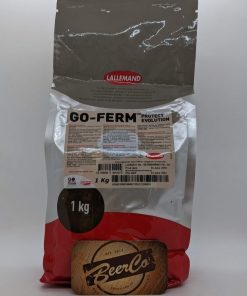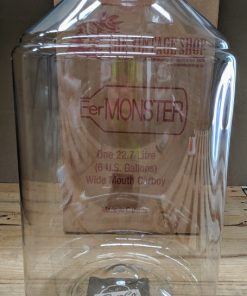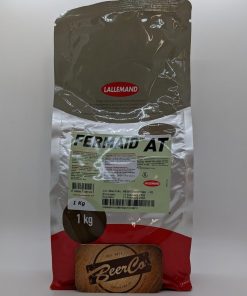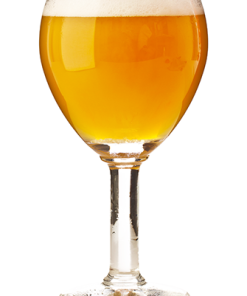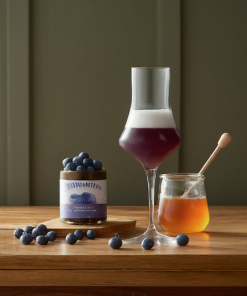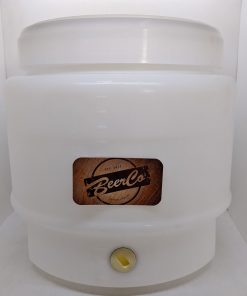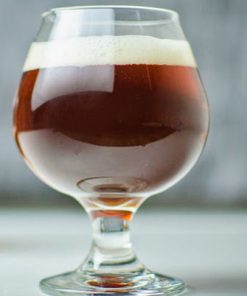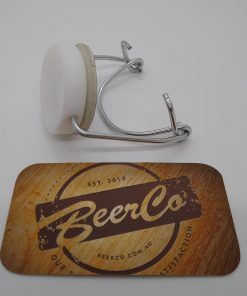Loki | Banana Pancake Acerglyn | Mead Recipe Kit BeerCo.au
$ 69,95 $ 34,98
Loki is the Norse god associated with mischief, trickery, and change. Loki is the son of the giant Farbauti and the goddess Laufey, and the brother of Thor and Tyr. Loki is a complex and multifaceted character, and his role in Norse mythology is often ambiguous. He is sometimes seen as a helpful ally of the gods, and sometimes as their enemy.
Experience the adventurous flavours of Loki – Banana Pancake Acerglyn Mead, a sweet and tart elixir made with honey, water, hops, and spices. Inspired by the Norse god of mischief and change, this mead will take your taste buds on a wild ride! Are you ready to indulge in a Viking-style breakfast and elevate your mead game? Grab your horns and Get Your breakfast Mead Making On!
Loki | Banana Pancake Acerglyn | Mead Recipe
written by Jimmy from BeerCo.au who might just like Loki – Horns Up!
Vital Stats:
- Batch Sizes: 5 Litres OR 10 Litres
- OG: 1.074
- FG: 1.000
- ABV: 10%
Recipe Kit Contents:
SINGLE BATCH (5 Litres):
- 2 Kg Archibald’s Honey | Stringy Bark
- 1 x M05 Mangrove Jack’s Mead Yeast 10g Sachet
- 1 x Mangrove Jack’s | Wine Yeast Nutrient
- 1 x 250ml Maple Syrup
- 150g Lactose
DOUBLE BATCH (10 Litres):
- 3 Kg Archibald’s Honey | Stringy Bark
- 1 x M05 Mangrove Jack’s Mead Yeast 10g Sachet
- 1 x Mangrove Jack’s | Wine Yeast Nutrient
- 2 x 250ml Maple Syrup
- 300g Lactose
Additional Ingredients and Equipment Required:
- 1.7 kg Bananas [Single Batch]
- 3.4 kg Bananas [Double Batch]
- Plastic Fermenter and Natural Tap
- 1 Gallon / 5 Litre Demijohn(s)
- 36mm – 45mm Bung | Bored
- S-Type Airlock Bubbler and Grommet for Airlock
- Hydrometer
- Digital Pocket Thermometer
- 250ml Glass Measuring Cylinder
- Easy Siphon
- 10mm Hose Tubing (Approx. 3m)
- Blue Bottler with Spring
- 1 Spoon for Stirring
- 500mL Glass Swing Top Bottles
Method:
- Leaving the peel on, chop the bananas into coins and freeze at least a day before starting your mead.
- Take your sliced banana out of the freezer to thaw.
- Once thawed fill your fermenter/ brew bucket with approx. 4.6 L of water. Add in 1.4kg honey and stir until combined.
- Throw 1.7kg banana (with peel) into the fermenter and aerate the must.
- Pitch ½ a packet of Mangrove Jack’s M05 Mead Yeast. Ferment between 15oC – 30oC.
- 24 hours after pitching the yeast open your fermenter and wet the floating banana by pushing them into the liquid using a sanitized spoon – this is to prevent mould. Then degas (gently stir) the mead. Now open the Mangrove Jack’s Wine Yeast Nutrient and distribute approx. ⅙ of the contents into the mead. Aerate for 1 – 2 mins.
- Repeat the previous step at 48 and 72 hours.
- Punch the fruit cap (wet the bananas) once a day for the first 7 days of fermentation. Do not open the fermenter (unless taking gravity readings) after this point as you risk oxidization.
- Once your gravity reads ≤ 1.000 and at least 3 weeks have passed since pitching the yeast, get some water boiling. Add 150g of lactose to 150ml of boiled water – Continuously stir till the lactose has completely dissolved. Allow the mixture to cool before pouring into a 5-litre glass demijohn.
- Rack (syphon) your mead on top of it and take a gravity reading.
- Leave your mead in secondary for 2 months. Check the airlock every so often in case it needs to be refilled.
- Bulk age and/or bottle†.
†Refer to the section on Stabilisation and Back Sweetening below.
NOTE:
– Everything that touches the honey and eventually mead at all stages throughout the process must be clean, rinsed and sanitized to avoid infection.
– If brewing a Double Batch times all measurements by two.
– The calculations given in the stabilisation and back sweetening guide are calculated for this particular mead at the stated ABV.
STABILISATION AND BACK SWEEENTING:
Loki is intended to be a sweet mead. The following is a brief outline on two different methods in order to achieve this.
METHOD 1:
- Confirm your mead has finished fermentation via a gravity reading – due to the lactose addition it should read approx. 1.007. Ideally, this will be done once your mead has started to clear.
- Crush one Campden Tablet (Potassium Metabisulfite) into a powder. Then using a scale that can accurately measure down to 0.01 decimal places weigh out 1.01g of Potassium Sorbate.
- Take a small sample of the mead and stir until both additives have completely dissolved.
- Pour the sample into an empty 5 litre demijohn and rack your mead on top of it.
- Allow between 12 – 24 hours to pass before weighing out 100g of honey.
- Pour the honey as well as 250ml of Maple Syrup into the mead and gently stir until combined, taking care not to cause a whirlpool or aerate the mead. If after 5 or so minutes of slowly stirring there is still some undissolved maple syrup don’t worry about it, this will sort itself out over the next couple of days.
- Take a gravity reading before replacing the airlock – It should be right round 1.024.
- Give your mead at least a week before confirming fermentation has not restarted. If the gravity matches what it did a week prior, you can move onto bottling.
WARNING: If you do not have all the established ingredients/ equipment in order to safely perform stabilisation via chemical additives DO NOT attempt to add additional honey into the demijohn – you will restart fermentation. Bottling while yeast are actively fermenting will cause bottles to explode, risking hospitalisation.
METHOD 2:
- Ideally, once your mead has cleared, bottle as per step 12.
- When you’re ready to drink some mead, go grab the maple syrup.
- Pour your mead into a glass (Serving Suggestion: 150ml).
- Portion out about ½ tsp‡ of maple syrup and stir into the mead.
- Consume the Nectar of the Gods!
‡Adjust the amount of maple syrup according to taste.
| Size | 5 L, 10 L |
|---|
Fast shipping and professional packing
We offer a wide range of shipping options due to our long-running partnerships with UPS, FedEx and DHL. Our warehouse staff are highly trained and will package your items according to our precise and precise specifications. Before shipping, all goods are thoroughly inspected and securely secured. Every day we ship hundreds of packages to our customers from all over the world. This is a sign of our commitment to be the largest online retailer worldwide. The warehouses are located situated in Europe as much as they are in USA.
Note: Orders containing multiple items will have a different processing period for each item.
Before shipping the items, our staff will carry out an extensive inspection of the products you have ordered. The majority of orders are delivered within 48 hrs. The delivery time should be between 3-7 working days.
Returns
We don't manage the stock in our factory and warehouse. Actual stock levels may fluctuate at any moment. Be aware that it's possible that your order will be out of stock after you have placed the order.
Our policy is for 30 days. Unfortunately, if 30 days have passed from the date you purchased the product, we are unable to offer you a return or exchange.
The item must not be used, and it must be in the original packaging. It must also be in the original packaging.
Related products
Equipment
Equipment
Equipment
Brewing Aids
Yeast
Equipment
Equipment
Equipment





